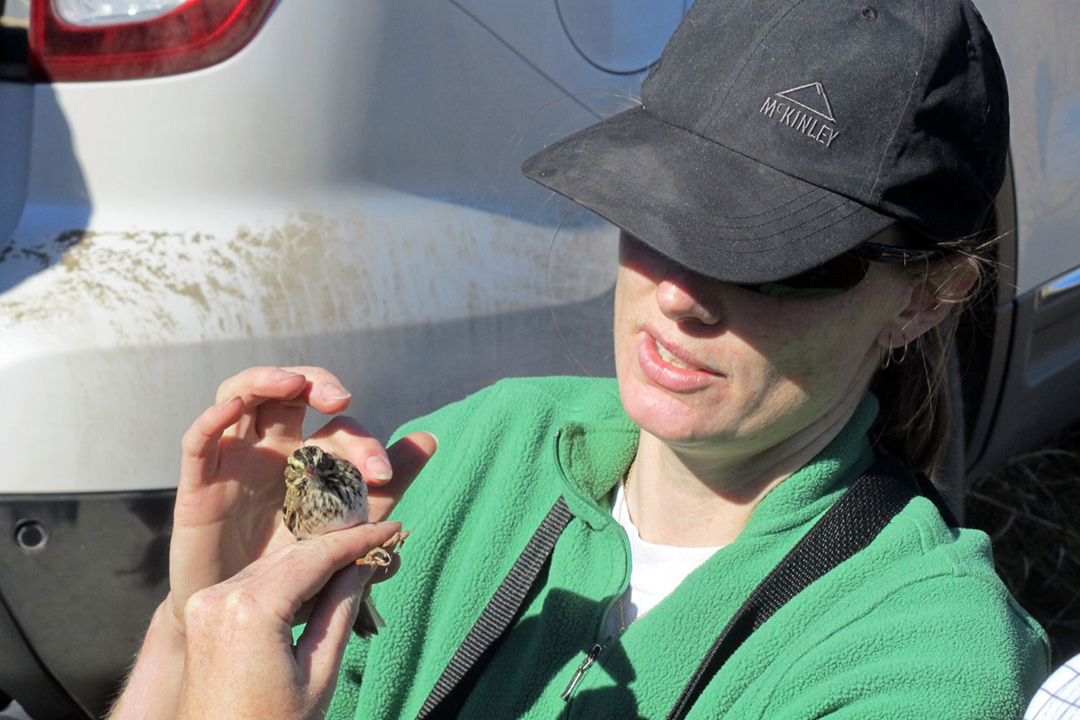
Protecting migratory bird populations
May 11 is for the birds. Specifically, for migratory birds, as the United Nations declared May 11 World Migratory Bird Day to prompt awareness and actions that will protect these important contributors to local and global ecosystems.
By Megan EvansLike the proverbial canary in the coal mine, the lack of thriving bird populations is a warning that the ecological system they call home is out of balance, though the reasons why will vary.
“There is a bird species (or several) specific to every ecosystem on the planet, from the Arctic to the tropics,” said Dr. Christy Morrissey (PhD), a professor of biology in the College of Arts and Science and with the School of Environment and Sustainability (SENS) at the University of Saskatchewan (USask). “But pollution, climate change, pesticides, and habitat loss means that in North America and around the world, bird populations are declining at an alarming rate.
“For example, a tiny dose of a pesticide can cause migratory songbirds to lose weight and delay their migration, which could reduce their chances of survival and producing young.”
In order for migratory bird populations to live and breed successfully, there is a high level of international co-operation required to protect the habitats of these birds, not only at the migratory journey end points, but on the paths in between. That is why the United Nations promotes World Migratory Bird Day instead of simply World Bird Day.
“Migratory birds are the heroes of the skies but many are facing enormous challenges as they cross international borders leading to population declines,” said Morrissey.
One of the challenges Morrissey alludes to is that migratory birds depend on more than one ecological system, often in two or more countries, depending on how often the birds need to stop for food and rest. A bird like the white-throated sparrow (that sings the familiar song “Oh sweet Canada-Canada-Canada…”) that makes its home in Saskatchewan boreal forest over the spring and summer, may be protected under provincial and Canadian environmental laws, but those same laws and protections will vary across other jurisdictions. Species that migrate into Central and South America may not be afforded the same kinds of protections in other geographical locations.
“Migratory birds play a vital role in healthy ecosystems, with critical links to human well-being that we are still working to understand,” said Morrissey. “What is clear, however, is that we need to do more to protect birds and the ecosystems we both rely on.”
While it may be tempting for humans to value economic activity over protection of birds and other wildlife—and adjust policies and actions accordingly—it is crucial to contemplate the underlying ecological and health implications attached to every decision made. As the COVID-19 pandemic has demonstrated, the closer people are to animals, the easier it is for the transmission of disease from animal to human population; a phenomenon known as zoonotic infection.
As human activity encroaches on previously unfrequented animal habitats, wild animals are forced into increasing proximity to human and domestic animal habitations. In the case of migratory bird populations, the risk is two-fold. Consider migratory duck populations which instead of occupying remote wetlands, are forced to use drainage ponds, water reservoirs, and dugouts near farms and domestic fowl such as chickens. The biological similarities between wild ducks and domestic fowl mean that infectious agents can easily pass between them, and from there, to the farmer’s family and the wider human population.
Another factor is that those same migratory birds travel thousands of kilometres every year. In the context of world-wide habitat loss, these birds are encountering humans and domestic animal populations at multiple points along their migratory routes. The migration of these birds then provides a means for transporting disease across vast distances which can exponentially amplify the risks for spread within their own species and potentially allow devastating diseases to enter the human population.
“Canada has laws to protect migratory birds but there needs to be greater co-operation among countries as these birds ‘belong’ to many countries during their life cycle,” Morrissey said. “Through partnerships, we need to act now to protect the thousands of bird species that are an indicator of the health of our planet.”

